The city of Oak Ridge, Tennessee was originally built from nothing and in the middle of nowhere, as one of the three major Manhattan Project sites. This is where key components of the war-ending atomic bomb were built. Its factories were staffed by tens of thousands of women, and the city’s entire existence was a well-kept government secret.
Oak Ridge still exists today and you can visit many of the original historical sites related to the Manhattan Project. This post will cover all the interesting places you can visit and the tour you shouldn’t miss.
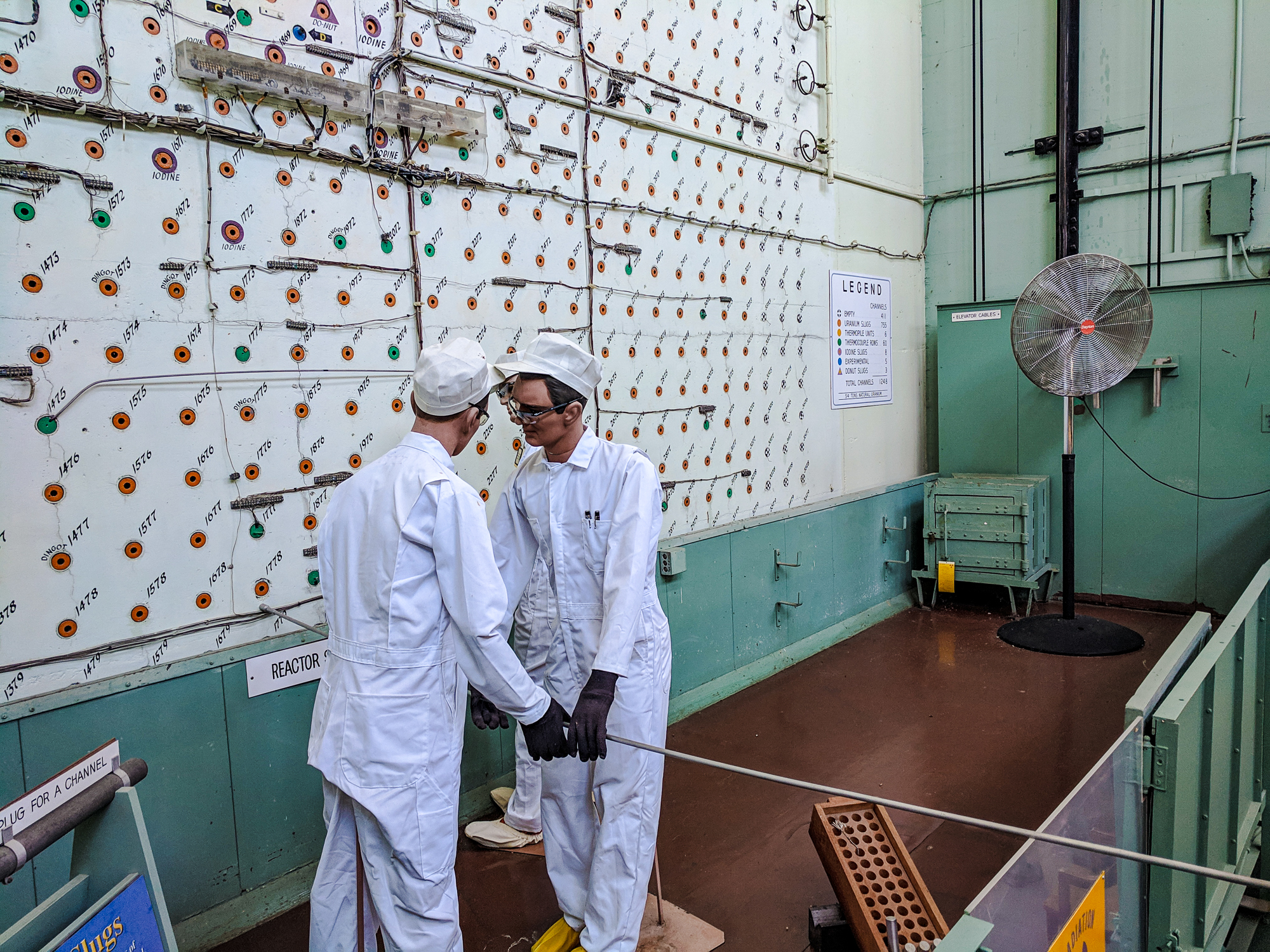
The secret city of Oak Ridge
The entire city of Oak Ridge was built from scratch for one monumental purpose: to build key parts of the ultra-top-secret atomic bomb. No one outside of town knew what was going on beyond the guard gates. Even those working on the project had no clue what they were building.
And no one could have predicted how the entire world would be changed by the work taking place in this tiny Appalachian town, this “secret city.”

What was the Manhattan Project?
The “Manhattan Project” was the name given to the top secret research and development endeavor that resulted in the production of the world’s first nuclear weapons. Among them, the atomic bombs dropped on Hiroshima and Nagasaki, Japan to end World War II.
Despite its name, the Manhattan Project actually took place in many sites around the United States, the United Kingdom, and Canada, with three primary locations: Oak Ridge, Tennessee, Hanford, Washington, and Los Alamos, New Mexico.
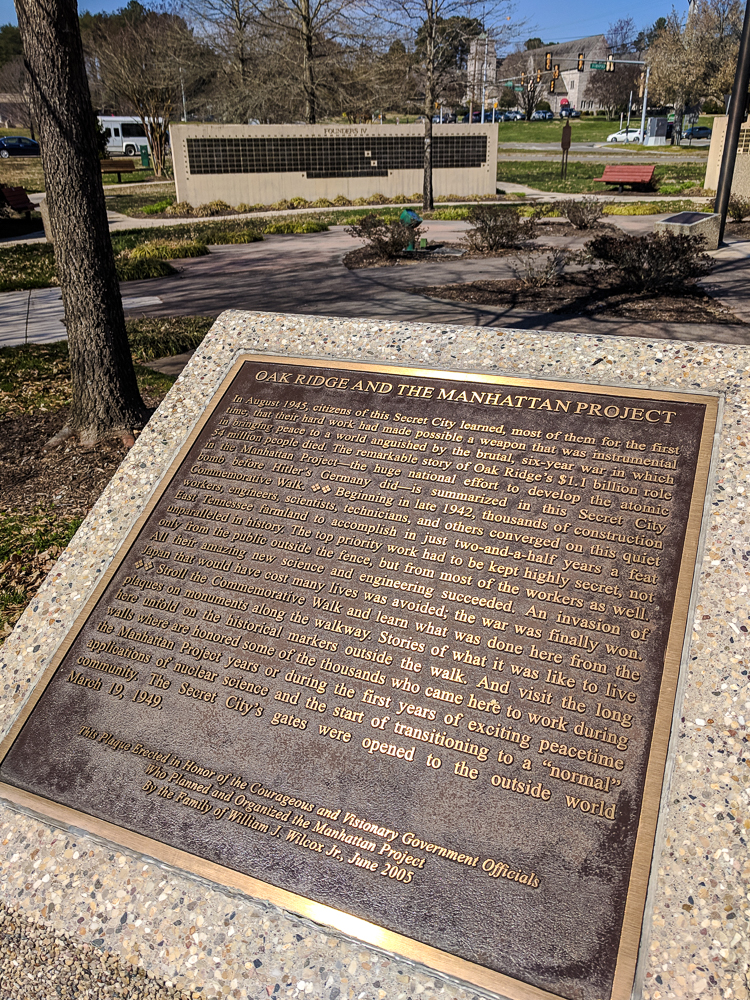
Manhattan Project Key Figures
Notable figures responsible for the Manhattan Project include:
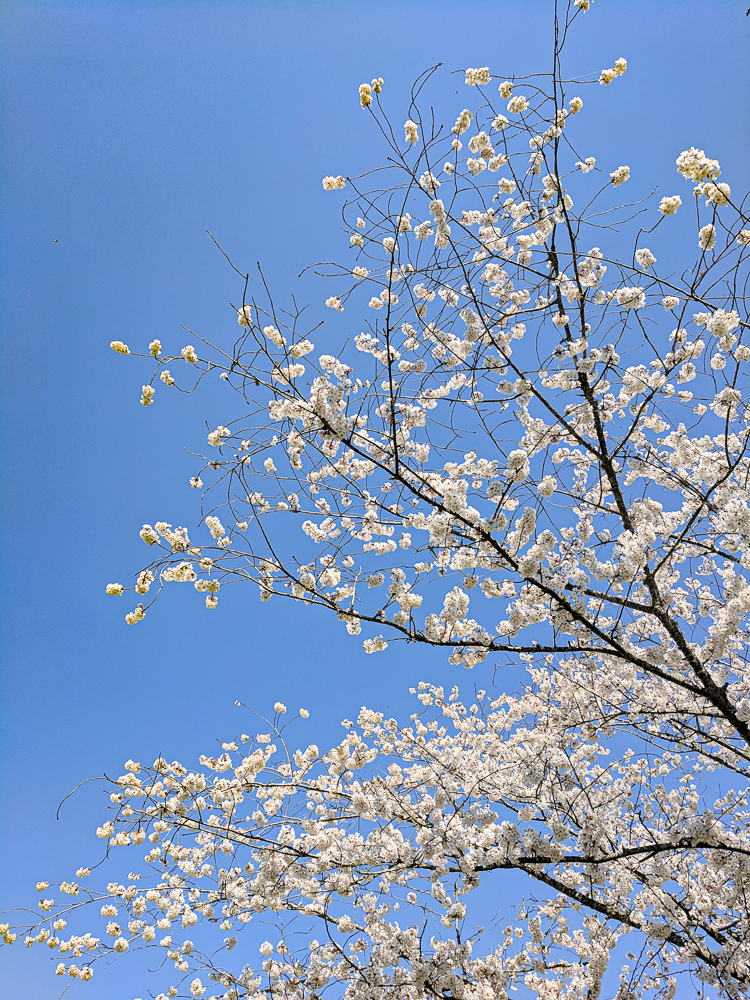
Manhattan Project sites in Oak Ridge
Even though the purpose of the Oak Ridge factories was fulfilled in 1945, it remains a thriving town to this day. Some of the Oak Ridge Manhattan Project sites are long gone, while some still operate on a massive scale (with different objectives, more or less).
There are schools and restaurants, parks and banks. By all accounts it’s just like any other small town. But there are still a number of original historical sites you can visit here, and some newer yet related developments as well. Be sure to check them all out–you can even do so in just one day.
Pro tip: If you plan to visit Oak Ridge from Nashville, be aware that the time changes from Central to Eastern Time Zone between exits 340 and 341 on I-40. Because #4 on this list is a strictly timed event, this is very important!
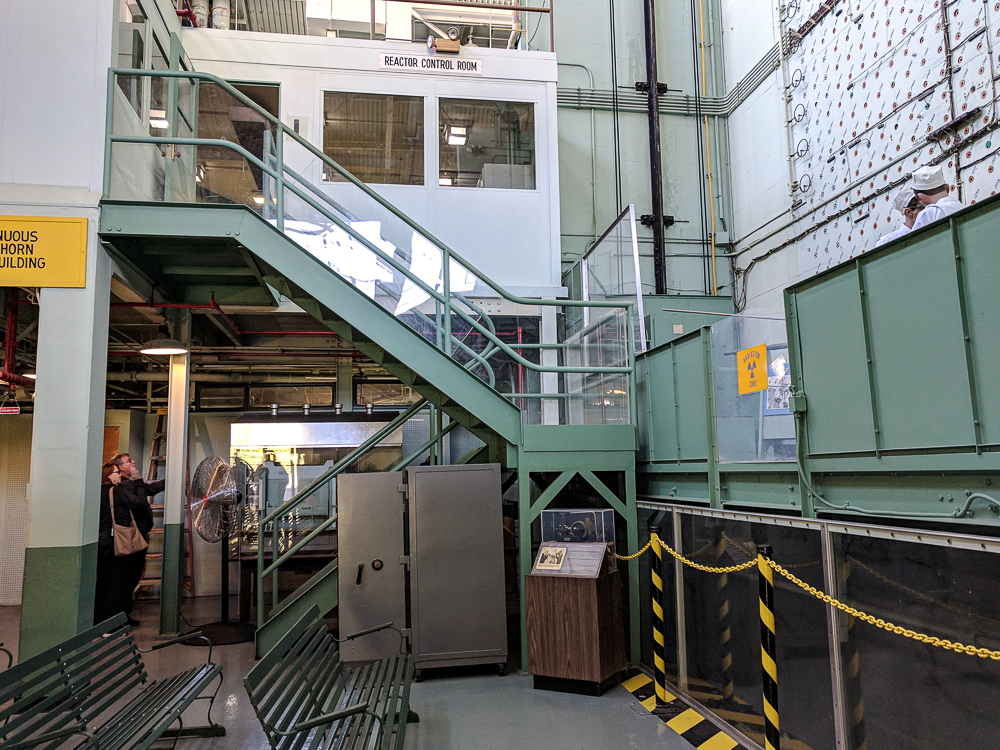
Map of Manhattan Project sites in Oak Ridge
This map contains all the Manhattan Project sites in Oak Ridge I mention in this post. To save this map: Click on the star ⭑ next to the map’s title to save in your Google Maps. To use this map: When you get here, open Google Maps on your phone, click “Saved” at the bottom, then click “Maps.”
1. American Museum of Science and Energy
Start your day in Oak Ridge at the American Museum of Science and Energy (AMSE). This museum was established in 1949 as a way to provide the general public with information on energy science.
Today, you can learn all about nuclear energy, uranium, technological developments, and how that all played a part in the Manhattan Project. And because it was established for the “general public,” the science isn’t too technical to understand.
You can explore the museum’s interactive exhibits, hands-on demonstrations, and hear presentations on a variety of related subjects presented by the National Park Service.
I say to start here because of all the Manhattan Project sites in Oak Ridge, the next one is the most important. Plus, the low cost of taking the tour I’m about to mention gets you free admission into the AMSE too.
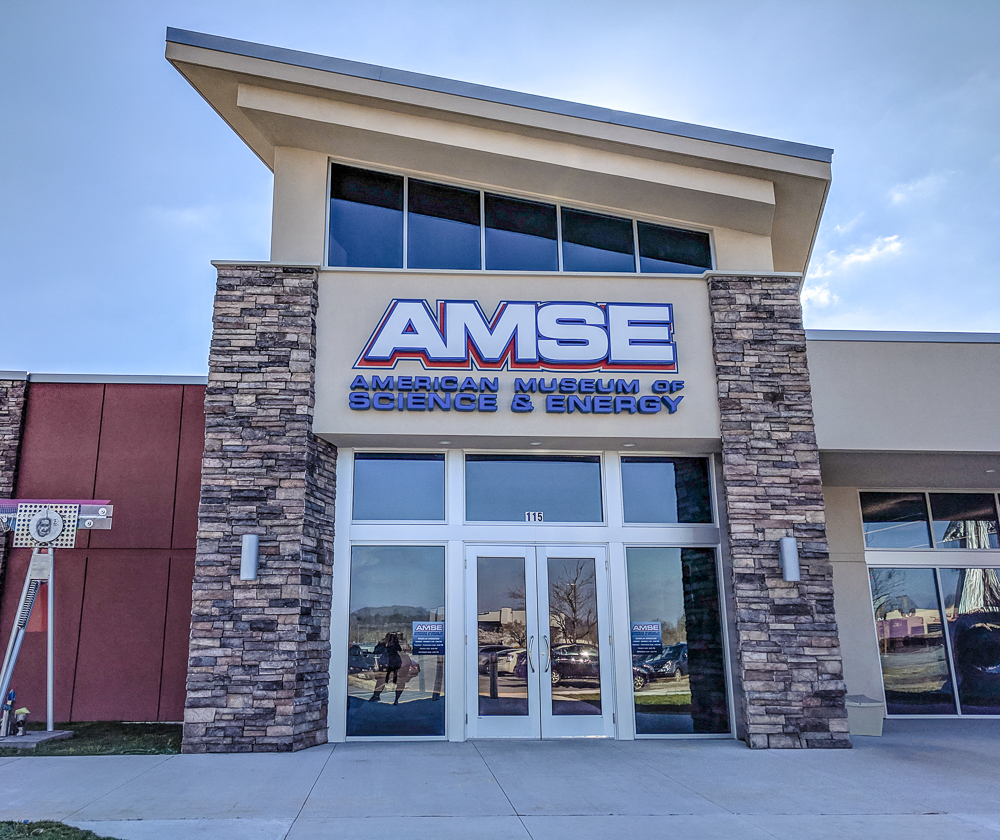
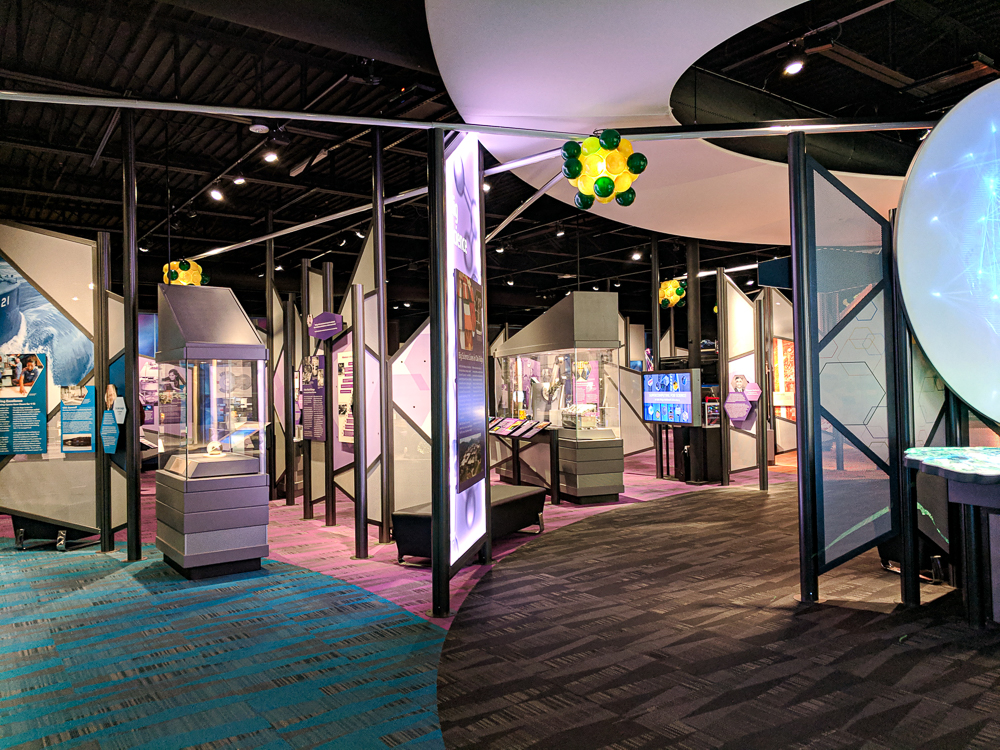
2. Department of Energy Bus Tour
The Department of Energy bus tour to the Manhattan Project sites in Oak Ridge you can still visit today is the main attraction of the city and its atomic history.
However, it’s not all history. Oak Ridge, Tennessee is still the home of the United States Department of Energy–the federal agency responsible for all things related to nuclear energy, nuclear weaponry, and nuclear waste (et al).
And in the spirit of educating us, the general public, the Department of Energy hosts guided bus tours to Manhattan Project sites around Oak Ridge led by former employees of the Oak Ridge National Laboratory.
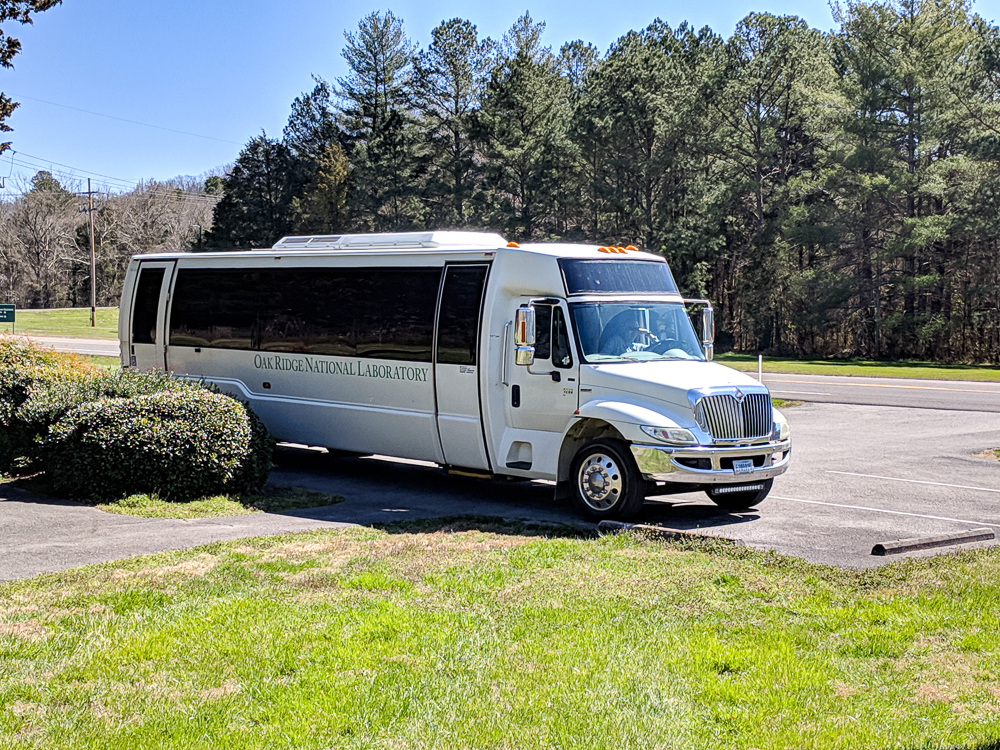
Oak Ridge National Laboratory
The Oak Ridge National Laboratory was established in 1943 as part of the Manhattan Project and, today, is the largest science and energy lab within the U.S. Department of Energy.
Research here focuses on neutron science, high-performance computing, materials and energy, systems biology, and issues of national security. Though you can visit on official business, you’ll only drive by some of the sites on your DOE bus tour.
The American Museum of Science and Energy
The reason I said to start your day here is because this is where you’ll catch your Department of Energy bus. Because admission to the museum is included in your bus tour, you might as well check it out while waiting for your bus. (They open early specifically for those taking the tour.)
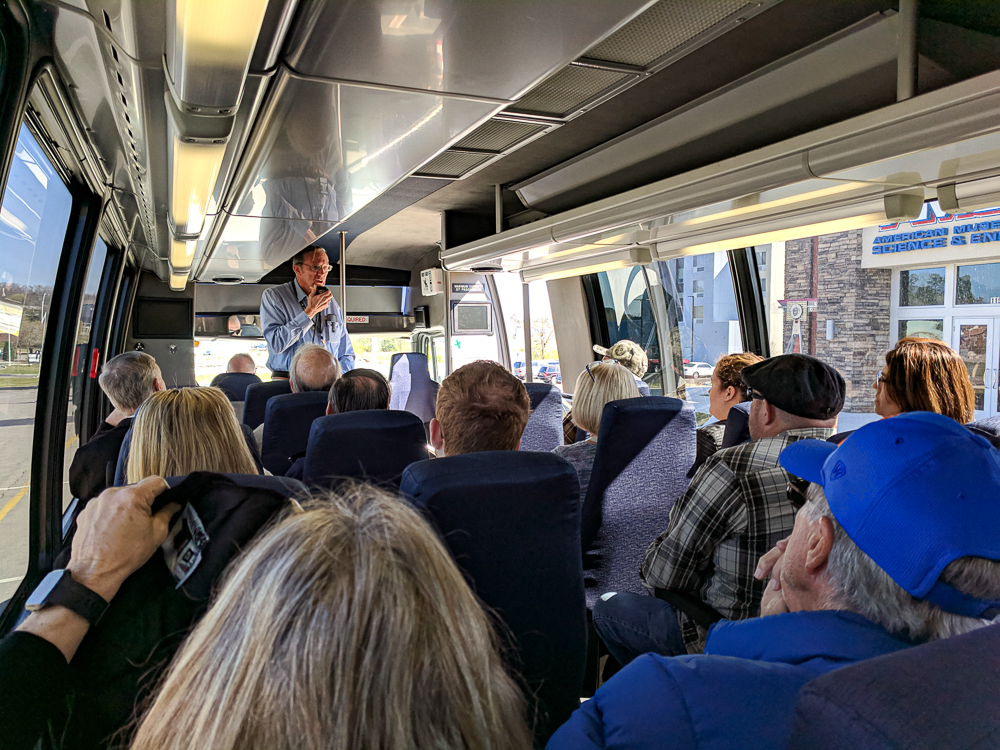
3. K-25 History Center
At the time of its construction in 1944, the K-25 building was the largest building in the entire world, coming in at an unreal 1.64 million square feet. (And somehow no one outside this town even knew it existed.)
This was the main location of the Manhattan Project’s work on uranium enrichment. While the Y-12 facility focused on enriching uranium through electromagnetic means, the K-25 revolved around gaseous diffusion.
The original K-25 building was completely demolished in 2013, but in 2021 a brand new 7,500-square-foot facility has opened here. You’ll get to see more than 250 original artifacts and learn all about gaseous diffusion (which is more interesting than it sounds, I promise).

4. Center for Computational Sciences
Next up is a stop at the Oak Ridge National Laboratory’s Center for Computational Sciences to meet Frontier, the world’s fastest super computer. You’ll learn why that’s significant and how it relates to things like nuclear energy.
Is Oak Ridge radioactive? For the typical, short-term visitor? No. But some government-sponsored testing suggests that Oak Ridge (and nearby towns) suffers an increased mortality rate due to low levels of radiation ingested gradually over time. You can read all about that in this International Journal of Health Services report.

5. Y-12 National Security Complex
Next on your DOE bus tour is the Y-12 National Security Complex. This building is considered the birthplace of the atomic bomb and was the location used for enriching uranium through electromagnetic processes. It was here where they collected the usable uranium that was used as fuel for Little Boy, the atomic bomb dropped on Hiroshima, Japan.
You will get to go inside the Y-12 National Security Complex, just not all that far (given that it’s still a top-secret government facility and all).
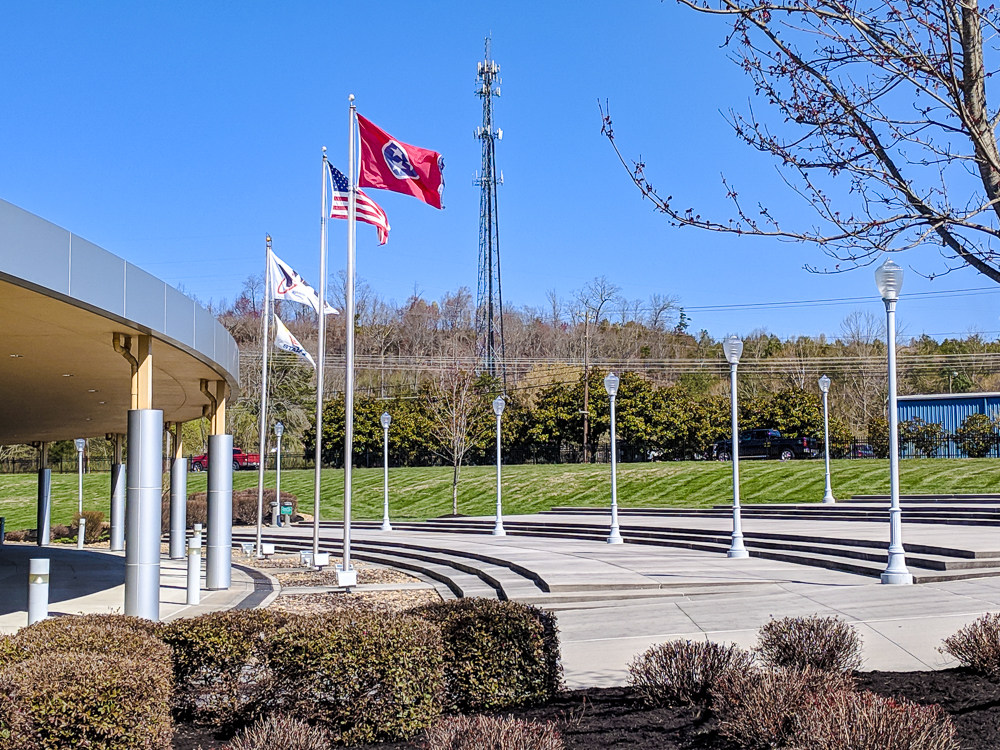
6. New Hope Visitor Center
Inside the Y-12 Complex, you’ll get to visit the New Hope Visitor Center. You’ll get to see examples of how this building played an important role in so many scientific advances. You will also get to hear a couple of presentations that cover the history of Oak Ridge and help explain what uranium enrichment actually is from some current and former employees.
Pro tip: Before your visit to Oak Ridge, be sure to read The Girls of Atomic City by Denise Kiernan. This book tells the entire history of Oak Ridge during World War II, why it was chosen for the Manhattan Project, what kind of work took place here, and so much more. Many of the Manhattan Project sites in Oak Ridge you’ll visit feature prominently in this book.
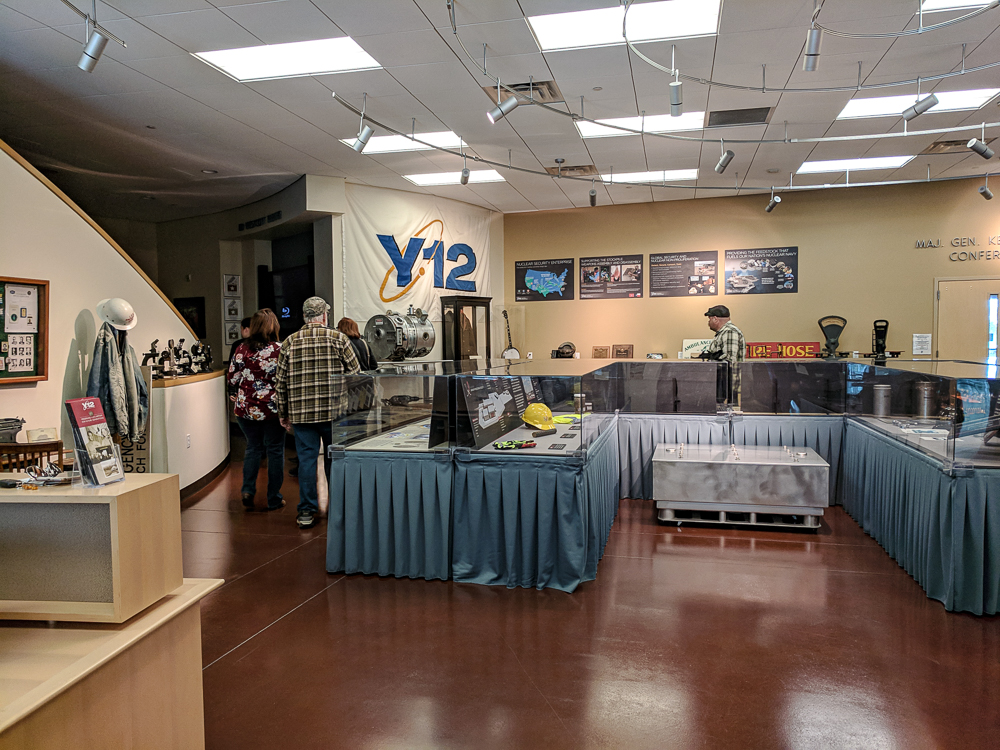
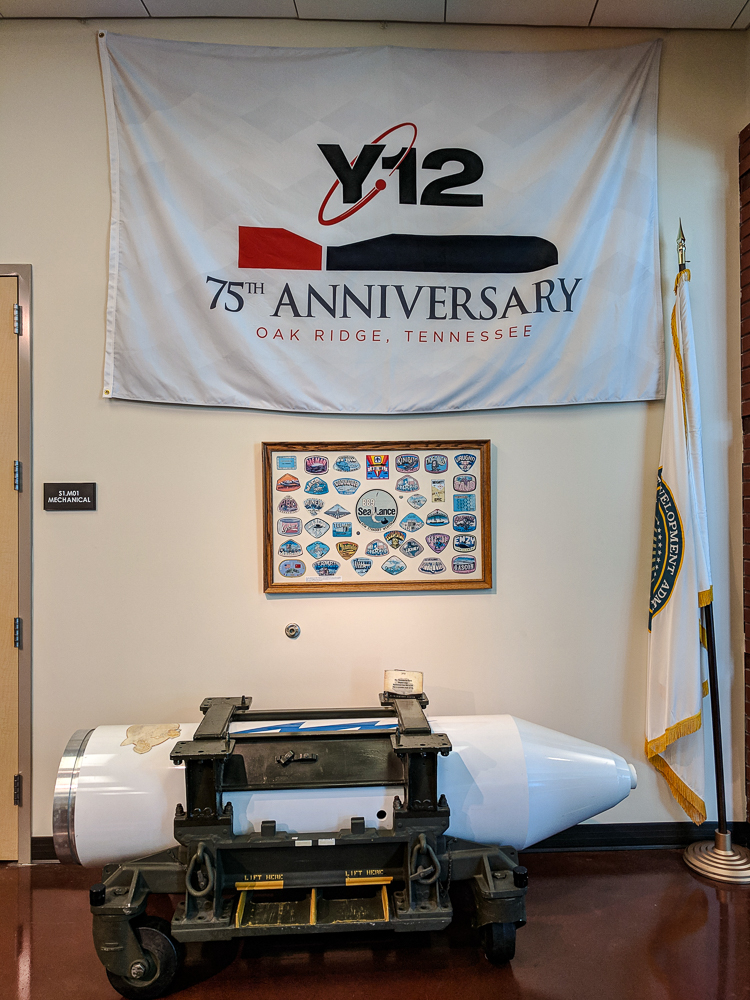
7. Spallation Neutron Source
Next on your tour you’ll drive by the Spallation Neutron Source, part of the Oak Ridge National Laboratory. (You won’t get to go in though because TOP SECRET.)
Basically, the Spallation Neutron Source is an “accelerator-based facility that provides the most intense pulsed neutron beams in the world.” According to this article on neutron science at the Oak Ridge National Laboratory, neutrons are a pretty big (but really, really tiny) deal.
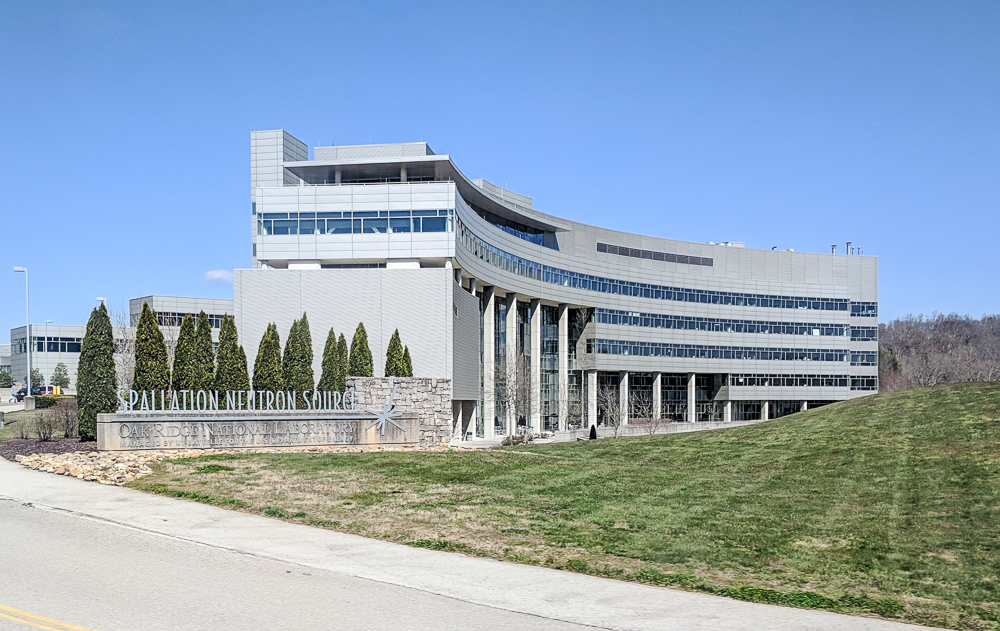
8. X-10 Graphite Reactor
The X-10 Graphite Reactor is the world’s oldest nuclear reactor and a National Historic Landmark. A lot of highly technical stuff took place here but, to summarize, its main goal was to work really hard at getting plutonium isotopes out of uranium… and it worked.
You’ll be given a generous amount of time in this building where you can learn all about how to get plutonium from uranium (since you were wondering), explore the building on your own, check out the old offices, etc.
Important: DOE bus tours taking place during the 2025 season are not visiting the X-10 Graphite Reactor due to ongoing historical preservation work. Contact the ASME for details.
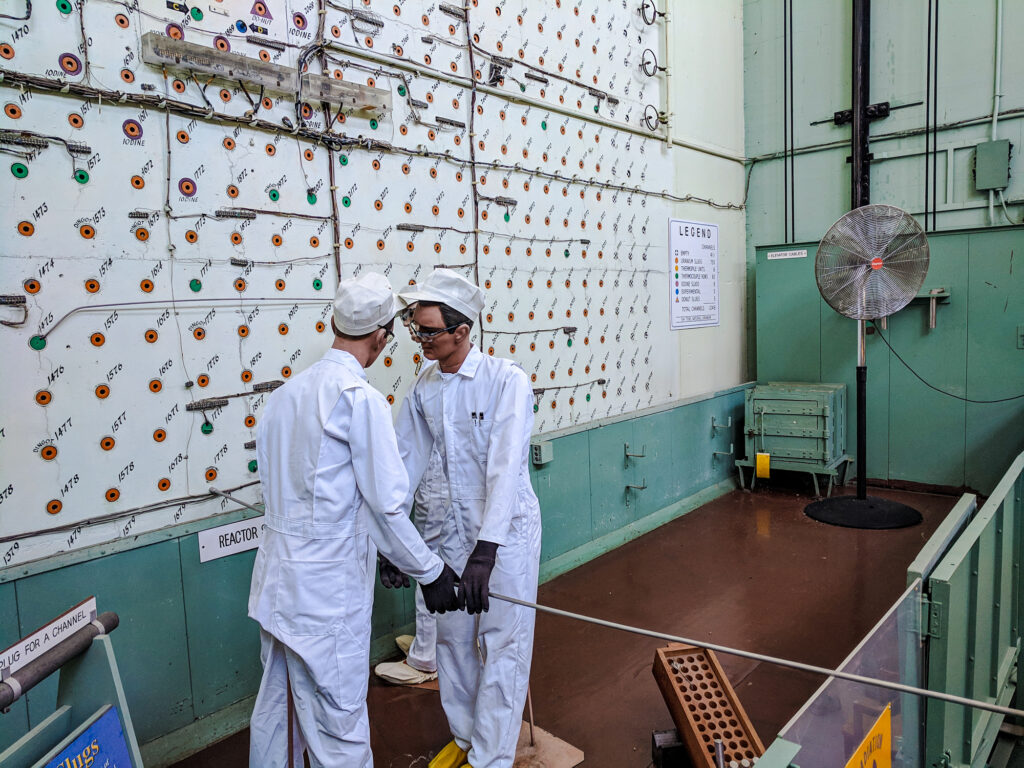
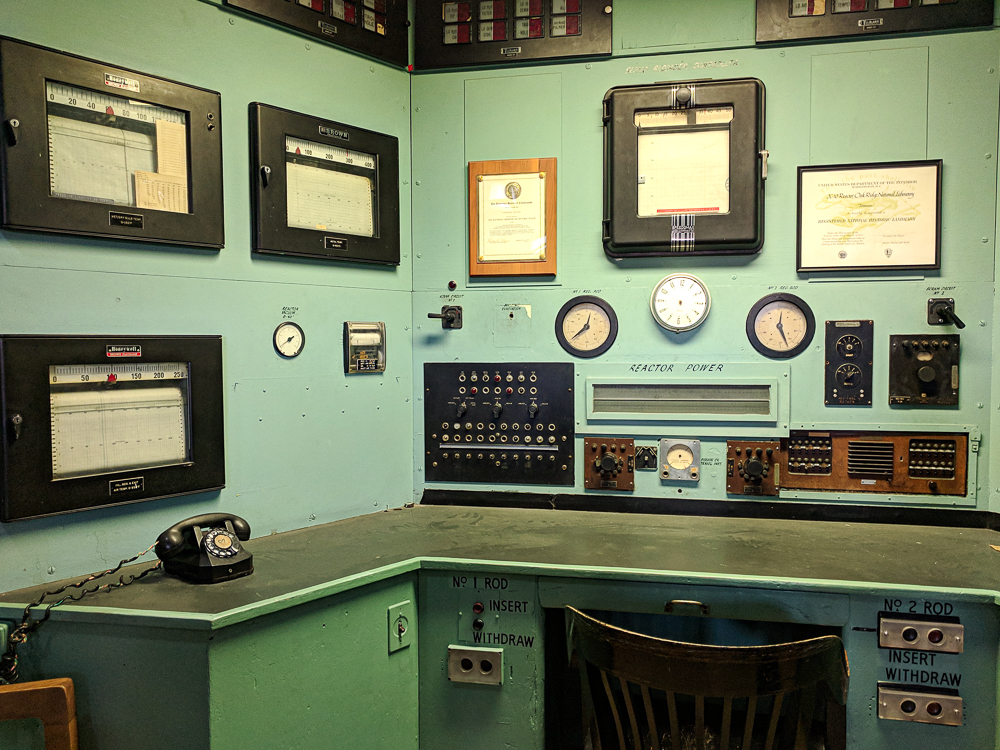
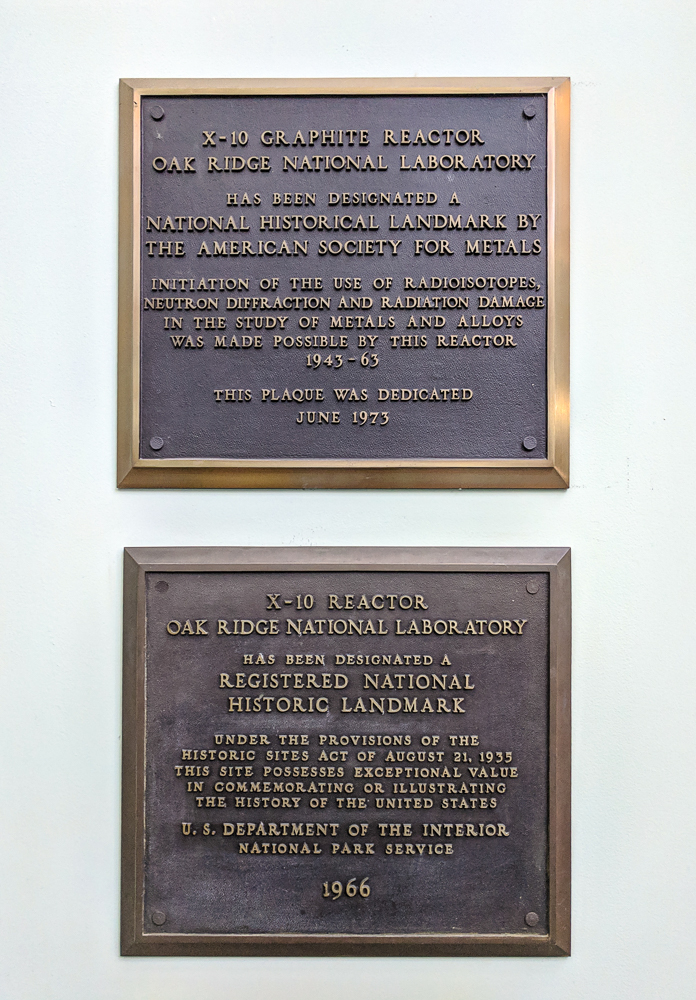
FYI: The first atomic bomb (dropped on Hiroshima on 8/6/1945) was a uranium bomb. The second and much more powerful bomb (dropped on Nagasaki three days later) was a plutonium bomb.
9. Secret City Commemorative Walk
The Secret City Commemorative Walk is a pleasant little tree-lined pathway that helps explain the timeline of Oak Ridge. It features 10 bronze plaques that each tell part of the story of how this city helped in putting an end to the war.
The walk will take you just about 15 minutes and is located at one end of A.K. Bissell Park. The area also features four “Founder Walls” that honor some of the pioneer Oak Ridgers and an American flag previously flown over the U.S. Capitol.
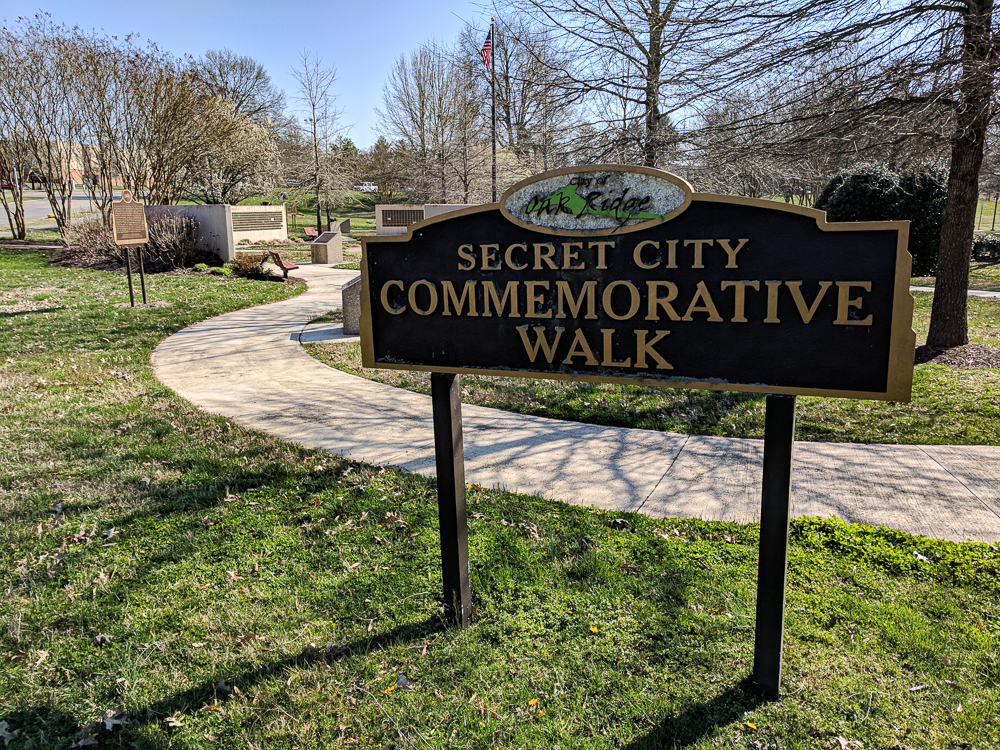
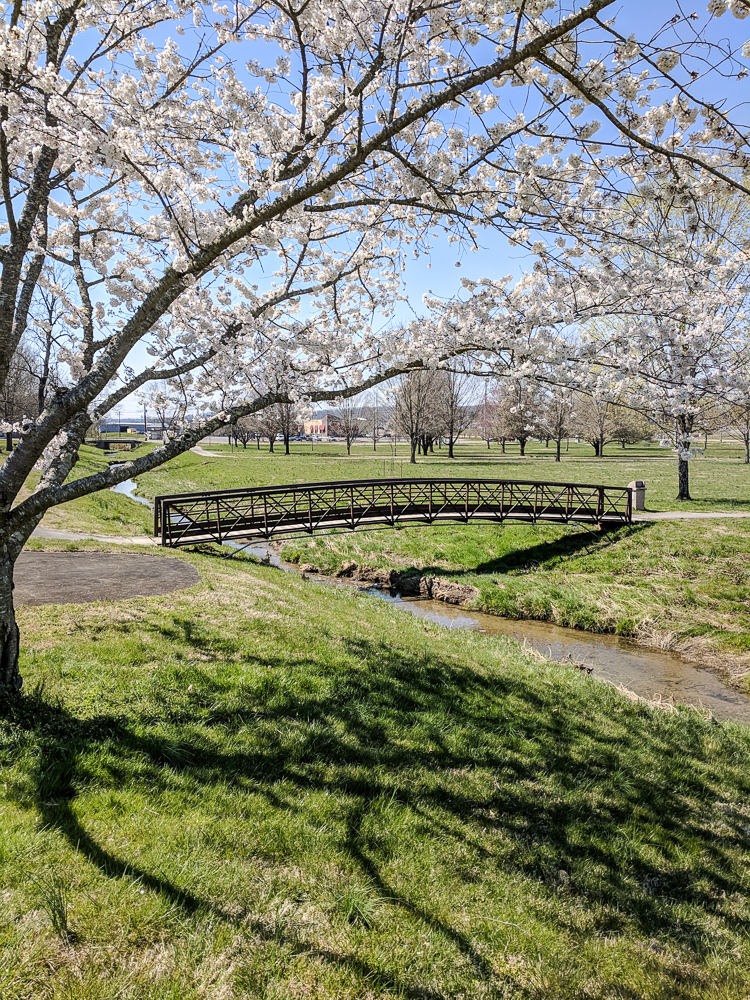

10. International Friendship Bell
At the other end of A.K. Bissell Park you’ll find the new Peace Pavilion and the International Friendship Bell. This 8,000-pound bronze bell features images meant to represent friendship and peace between the United States and Japan. It also contains the dates of the attack on Pearl Harbor, VJ Day, and the bombings of Hiroshima and Nagasaki.
It was created by Sotetsu Iwazawa, renowned bell maker from Kyoto, and officially dedicated in May 1996. The idea for the bell came when, on a research trip to the Japan Atomic Energy Institute in 1987, Dr. Ram Uppuluri and his wife–natives of Japan but residents of Oak Ridge–were inspired by the bonshō bell at a nearby Buddhist temple.

Previously, the bell was only allowed to be rung three times a day between 6 and 6:15pm, but today you can ring the bell at any time of day, as many times as you like. (The construction crew tried to get me to ring it, but I was way too scared of how big a sound it was going to make in this quiet town!)
Fun Fact: You can find another Japanese friendship bell in Boston, Massachusetts with an equally interesting WWII story.
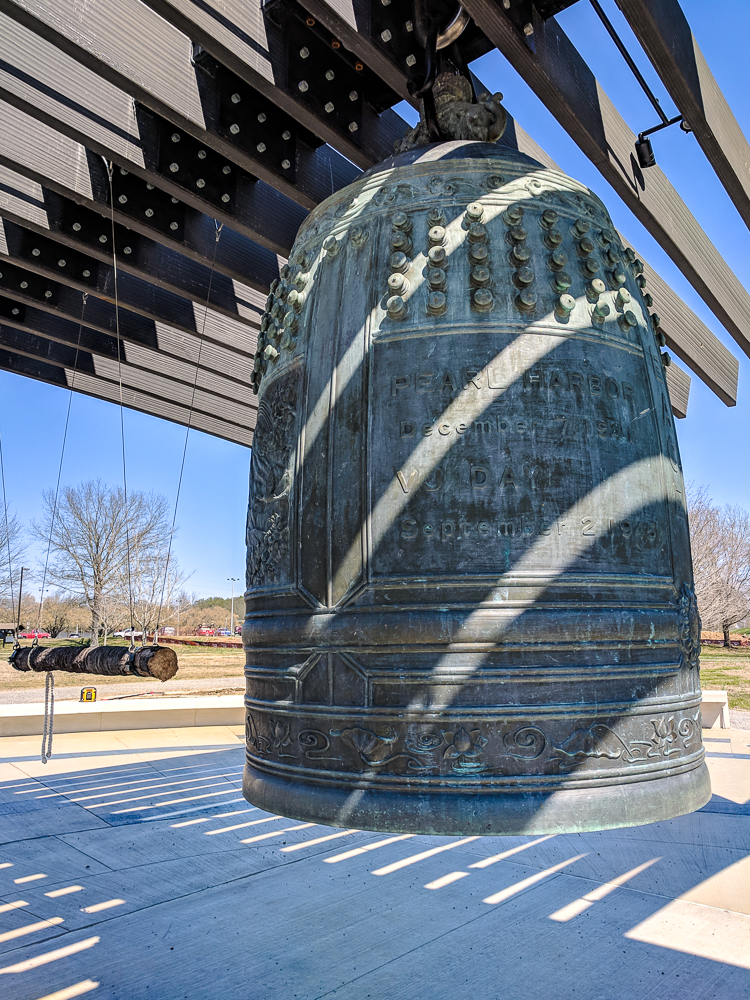
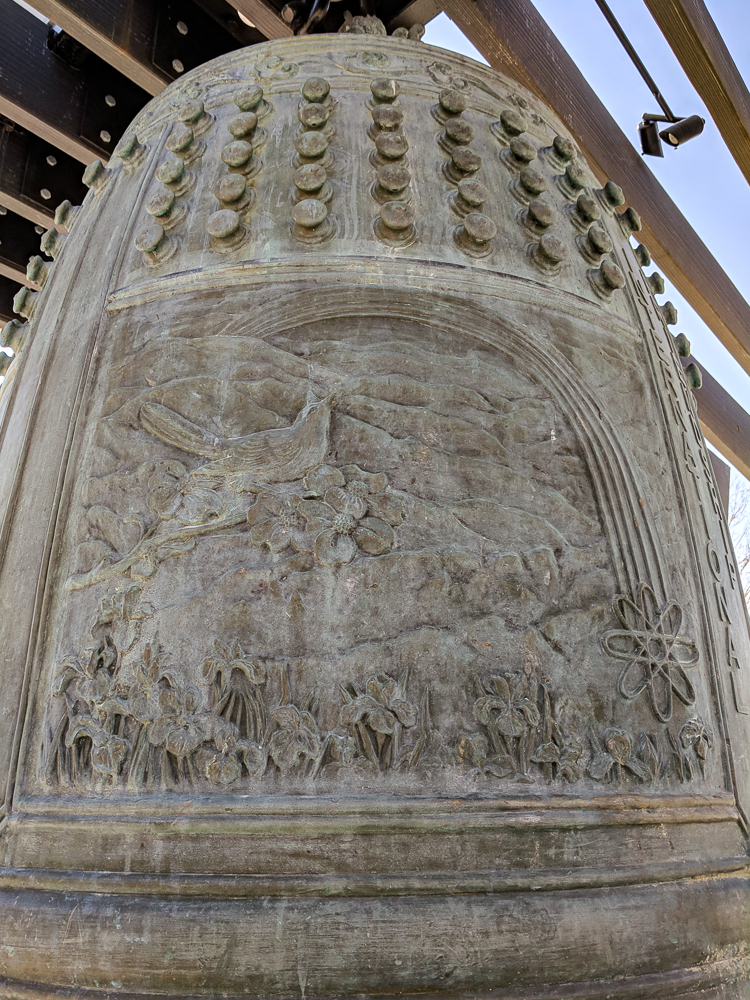
11. Oak Ridge History Museum
Just across the main road from the International Friendship Bell is the Oak Ridge History Museum, located inside the Midtown Community Center, itself a relic from the 1940s. This museum is small but great at showcasing the history of Oak Ridge through a variety of exhibits.
While part of the museum focuses on the science and the Manhattan Project, one exhibit now showcases the “human side” of life within the Manhattan Project, focusing on day-to-day life for those working in Oak Ridge during World War II.

12. Historic Jackson Square
Though Oak Ridge was a city built for one specific purpose, they soon realized the need to offer regular “city things” to its residents. Think: movie theaters, restaurants, and other activities and hangouts.
When the population of Oak Ridge reached its height of 75,000 residents, Jackson Square was the social center of it all. Because of the non-stop work schedules of Oak Ridge residents, Jackson Square was the town hot-spot 24 hours a day, 7 days a week.
Today, it’s a modest collection of quaint shops, a restaurant, a theater, and a weekly farmers market. Under the portico, you’ll find a display containing photos of what Jackson Square looked like in the 1940s.
Fun fact: One of Oak Ridge’s “non-work” activities included a six-team African-American baseball league. After the war, the organizer’s of this league morphed it into a semi-pro baseball team called the Oak Ridge Bombers.
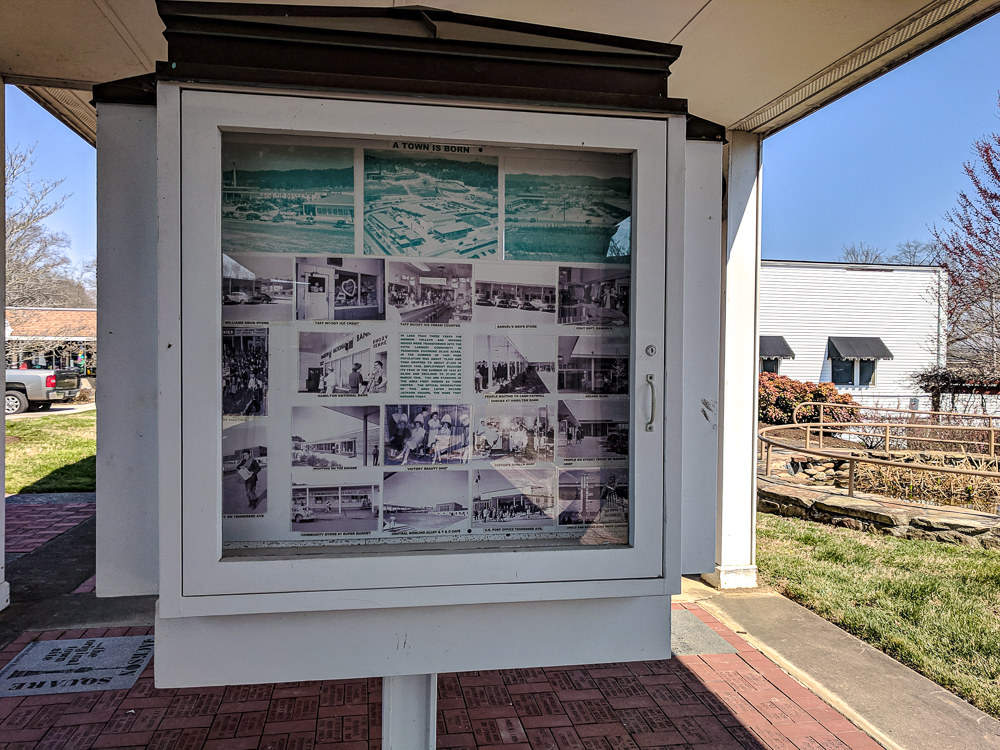
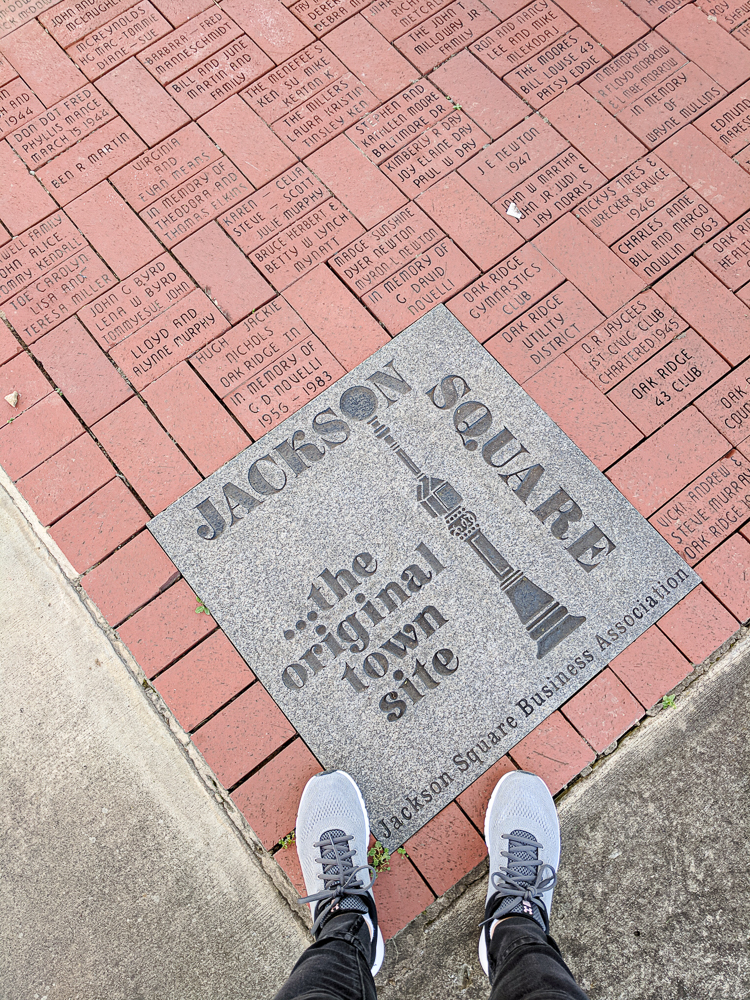
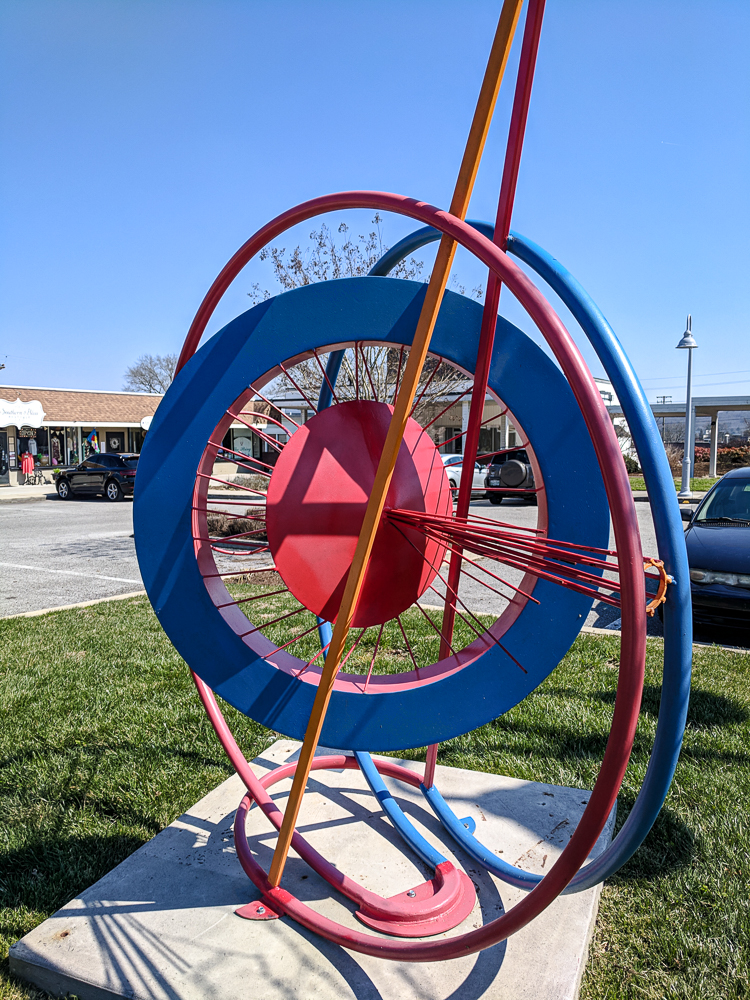
13. Alexander Inn
Across the street from Jackson Square stands the Alexander Inn, formerly known as the Guest House. Built during the Manhattan Project, it’s now found on the National Register of Historic Places.
At the time, this building was used as the guest house for visitors on official business like Enrico Fermi and Robert Oppenheimer. Today, this building serves as a senior living center.
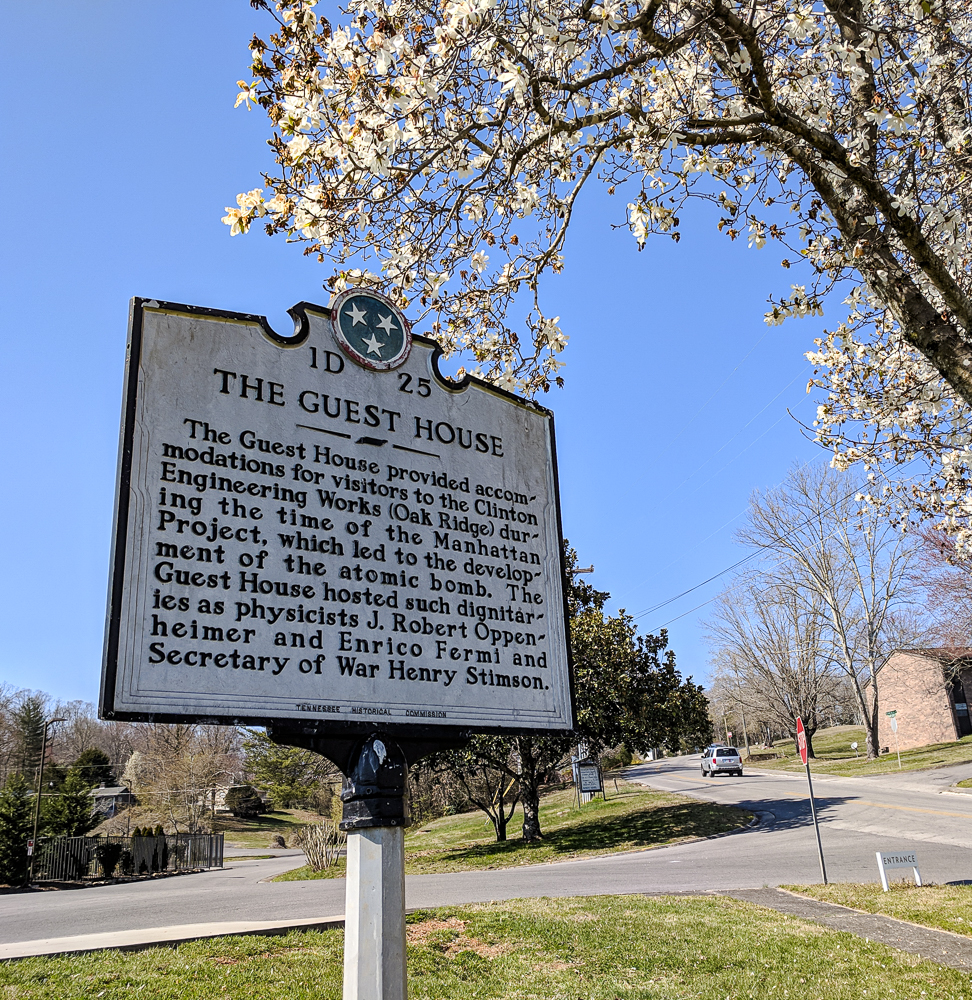
14. Manhattan Project National Historical Park Visitor Center
The Manhattan Project sites in Oak Ridge make up the greater Manhattan Project National Historical Park, part of the National Park Service. You can visit the MP National Historical Park visitor center which is located inside the Children’s Museum of Oak Ridge.
While here,you can speak with National Park rangers, stamp your National Parks passport, and check out a shop full of books and mementos from the area. You can also pick up a brochure and a large map featuring all the Manhattan Project sites in Oak Ridge.
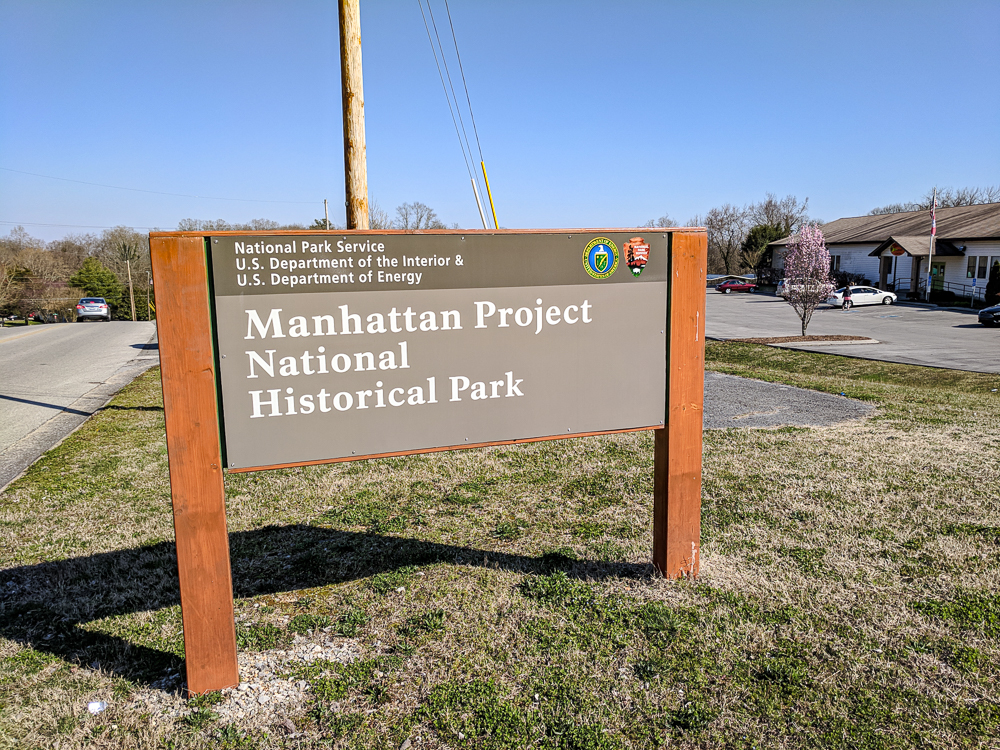
15. Norris Dam
Located the farthest outside of Oak Ridge Center is Norris Dam (best visited on your way in or out of Oak Ridge). Located in the nearby town of Rocky Top, Tennessee (a real place I assure you), Norris Dam was built between 1933 and 1936. This hydroelectric dam spans the Clinch River at 265 feet high and 1,860 feet across.
Norris Dam controls flooding by helping to store water; and when that water is released it generates electricity. And the biggest consumer of the electricity created at Norris Dam are the atomic plants in nearby Oak Ridge.
Norris Dam is also on the National Register of Historic Places and includes a visitor center as well as a scenic overlook.

Suggested books and movies
If you’d like to read more about these topics or watch some related movies, check out the following:
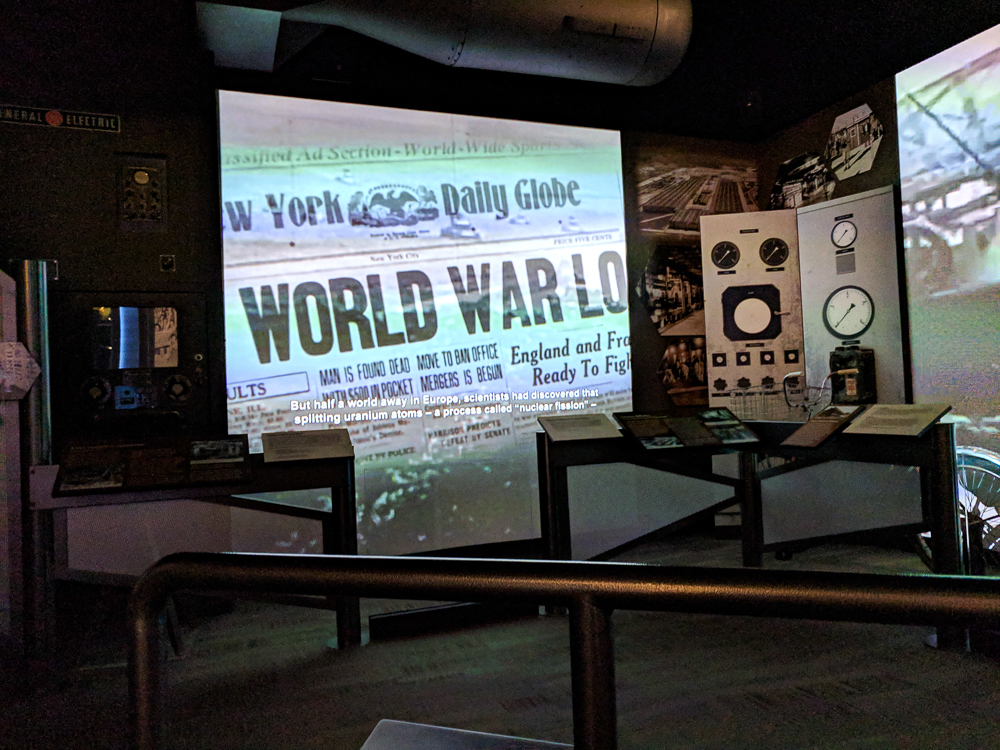
More info for your visit to Oak Ridge
- Hotels: Find great places to stay on Booking.com (my go-to). Expedia and Hotels.com are worth checking too. VRBO is best for vacation rentals.
- Rental cars: Check out the best local rental car deals here.
- For more local tours, check out all the options from Viator and Get Your Guide.
Like this post? Have questions about any of these Manhattan Project sites in Oak Ridge? Let me know in the comments below. Have a great trip!

Save this info, pin these images:

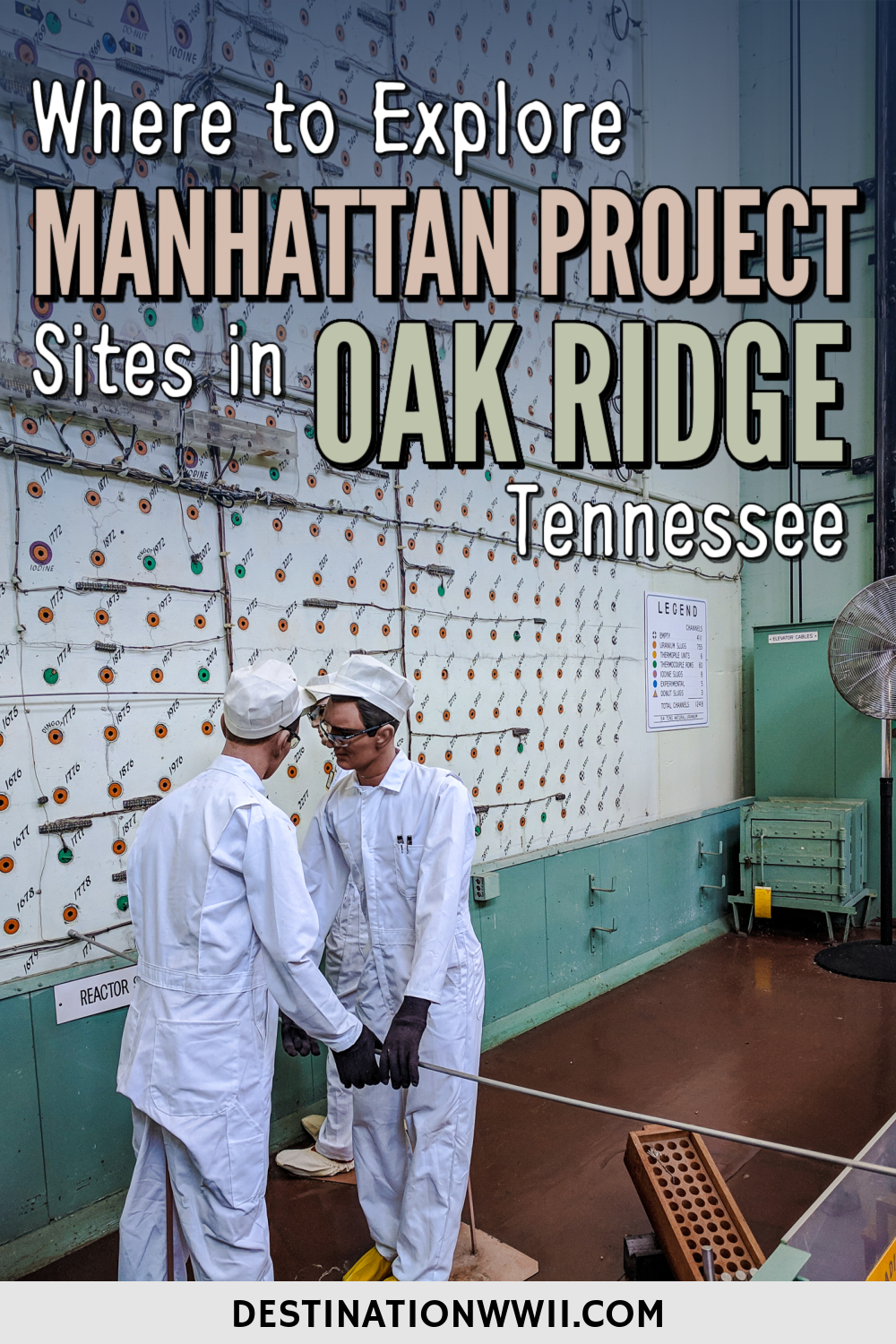

Norris dam is not in the town of Rocky Top Tenn,
( formerly known as Lake City, Tn) as you indicate in the article. Strangely enough it is in, or rather next to, the town of Norris which was constructed by the TVA as a place to house the workers who built the dam and and those who operate it.
Thanks for your comment Philip. As Norris Dam State Park officially considers their location to be Rocky Top, Tennessee and uses it as their official address, that’s my reasoning for stating so. See this image to see what I mean.
Is there a timetable for the bus tours to open?
Hi Theresa! Unfortunately I haven’t been able to find a possible reopening date. Have you tried calling them? They may be able to give you a better answer. Otherwise I would just keep checking their Facebook page – that’s what I always do. Good luck! I hope the tours open up soon.
My father worked on the Manhattan Project. He was here for a couple of years from PA. We were hoping to do bus tour etc, but closed because of Covid. So disappointed.
I would like to connect with others who had family who worked here & possibly get my Father’s name on list of alumni.
Wow, so incredible! I hope you get to do the bus tour at some point – it’s so interesting.